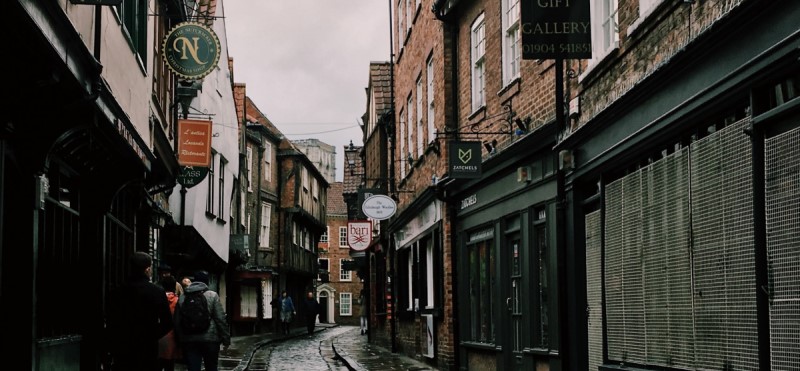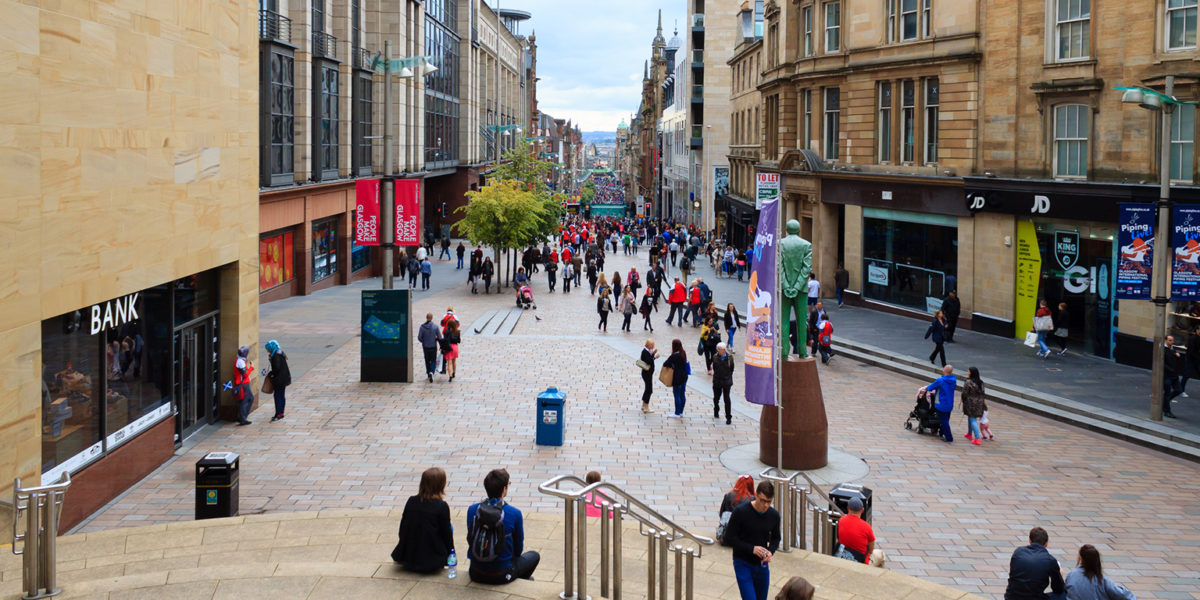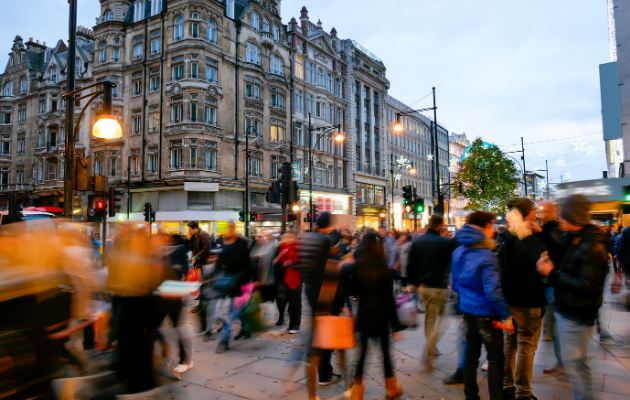
The latest update of the High Streets Recovery Tracker includes footfall and spend data until the end of June and reveals the recovery has lost momentum.

Analyst Valentine Quinio explores the latest high street spend and footfall data to establish what impact England’s ‘Freedom Day’ had on consumer behaviour, and what this means for high street recovery.
The 19th of July was a landmark moment for England’s path towards normality, as all restrictions and social distancing guidelines were lifted. Businesses such as nightclubs which had been forced to shut for the past 18 months could reopen their doors to customers; and work-from-home advice was also removed, with the Government’s expectation that people would gradually start returning to the office. Both were due to bring long-awaited relief for many high street businesses up and down the country.
But did ‘Freedom Day’ have the expected impact on behaviours? The latest update of the High Street Recovery Tracker, with footfall and spend data up until the end of July, shows how the recovery plays out between places.
Let’s start with the good news. Consumer spending levels are now, averaged across all cities, reaching 90 per cent recovery compared to their pre-pandemic baseline, and a total of 30 cities have reached (or are just about to reach) full recovery. Smaller seaside resorts or tourist hubs like Blackpool, Bournemouth, York and Brighton have bounced back the most- and they are also where Freedom Day had the most impact in terms of spend (Figure 1).
| Rank | City- top 10 | Spend recovery levels on the week starting 18th July 2021 | Percentage point change from the week before | Percentage point change from last summer | Rank | City- bottom 10 | Spend recovery levels on the week starting 18th July 2021 | Percentage point change from the week before | Percentage point change from last summer |
| 1 | Blackpool | 2.11 | 56 | 74 | 53 | Slough | 0.84 | 1 | -8 |
| 2 | Bournemouth | 1.57 | 31 | 35 | 54 | Peterborough | 0.83 | 0 | 4 |
| 3 | York | 1.3 | 10 | 27 | 55 | Cardiff | 0.83 | 4 | 11 |
| 4 | Brighton | 1.25 | 14 | 20 | 56 | Birmingham | 0.8 | 5 | 17 |
| 5 | Liverpool | 1.18 | 15 | 24 | 57 | Ipswich | 0.79 | 6 | 1 |
| 6 | Burnley | 1.12 | 5 | 4 | 58 | London | 0.74 | 4 | 28 |
| 7 | Middlesbrough | 1.12 | 18 | 4 | 59 | Aberdeen | 0.73 | -1 | 12 |
| 8 | Worthing | 1.1 | 12 | 6 | 60 | Coventry | 0.73 | 4 | 7 |
| 9 | Mansfield | 1.09 | 9 | 9 | 61 | Oxford | 0.72 | 6 | 10 |
| 10 | Blackburn | 1.06 | 2 | 9 | 62 | Aldershot | 0.67 | 3 | -6 |
Source: Beauclair, 2021.
Take Blackpool, for instance: spending levels in the city centre experienced a 56-percentage point jump in just a week, and are now at their highest since the pandemic started (Newcastle and Sheffield being the two other cities where that is also the case). In most places, the vaccine-driven boost is visible too (Figure 1): average spending levels are 19 percentage points higher than last summer’s average.
Footfall data helps understand how these patterns play out, and who benefitted the most from the final ease in restrictions. It shows that after the 19th of July, average night-time activity rose by 16 percentage points in just one week, providing a much-needed boost to the pubs, restaurants and night-clubs in a number of city centres. People’s eagerness to go out and socialise was particularly high in the North and Midlands: Blackpool again (echoing the spend data) as well as Sunderland and Leicester experienced the highest jump in night-time activity.
At the other end of the spectrum, London still struggles to attract evening visitors, and only experienced an eight-percentage point increase in city centre visitors. This is echoed in the spend data: the capital is amongst the five cities with the lowest consumer spending recovery (74 per cent of its pre-pandemic levels).
The reason for this is quite simple and has to do with the role the city centre plays: in these large, economically important cities like London but also Birmingham and Manchester, high street businesses (such as cafes, shops but also evening hospitality venues) rely heavily on office workers, much more than on weekend trade.
And office workers are, for now at least, still reluctant to return to their desks: on average, less than one in five (18%) were back at the end of July, despite government calls to do so. This has important implications for the next few months: if workers don’t return, then spending levels are unlikely to fully bounce back to their pre-pandemic levels (Figure 2), and the sectors which usually cater for these workers, whether in retail or hospitality, are likely to struggle, especially as the end of furlough looms.

Source: Locomizer, 2021; Beauclair, 2020.
All in all, this month’s update paints a mixed picture as the country takes steps back to normality. While some places are bouncing back faster than others, a number of questions remain: will workers go back in September once summer is over? Will seaside towns and cities experience a drop-off in footfall and spend levels at the end of August when tourists leave?
Closely monitoring the recovery will be key to determine the answers- and find out what needs to be done at the national and local level to support high streets. Centre for Cities will bring regular updates in the next few months, so keep an eye on this space.

The latest update of the High Streets Recovery Tracker includes footfall and spend data until the end of June and reveals the recovery has lost momentum.

The latest update of the High Streets Recovery Tracker includes spend data up until the end of April and gives a sense of how spending in UK cities and towns is recovering as lockdown restrictions begin to lift.

Drawing on lessons from the first lockdown, there will likely be large differences between how the high streets of cities across the UK recover as restrictions begin to lift.

How to revive the high street after the pandemic.
Leave a comment
Be the first to add a comment.